Not long ago, I used to own a dynamic and ribbon microphone. If you're familiar with dynamic and ribbon microphones, you know that they are low output mics.
I couldn't harness their full potential for a long time until my friend recommended that I get Cloudlifter.
The Cloudlifter did increase the output by a considerable level and made my mics ideal for classical or acoustic music.
Here is the best part. The Cloudlifter also improved the sound from my ribbon mic. It made it sound like a dynamic microphone, which was terrific.
So, if you're wondering what a cloud filter is, and you would like to get one, read on.
In this article, you'll learn what a cloudfilter is, how it works, whether you need it, and everything you need to know about it.
Let's dive in.
What is Cloudlifter?
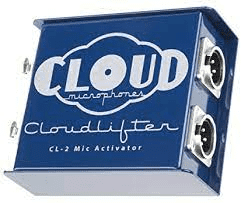
A Cloudlifter is a type of preamplifier used primarily to increase low output microphones. It works by using power from the microphone line to create electrical energy, which is then amplified and processed.
Cloudlifters are compatible with most microphones like condenser, ribbon, and dynamic ones. They do not add any color to the microphone's sound, just boost its output level.
A Cloudlifter can be described as a phantom power supply consisting of a preamplifier housed in an XLR cable for connection.
It's excellent for microphones that require higher input voltage than available standard 48V from phantom power supplies to function correctly.
What does a Cloudlifter do?
If you've encountered the term "Cloudlifter," you might be interested in knowing what it does.
A Cloudlifter is a microphone preamplifier that attaches to an XLR microphone line to increase your mic signal.
[It functions as a high impedance voltage booster for microphones with low output levels. If you have a condenser microphone, then chances are it's going to need one of these Cloudlifters. The Cloudlifter CL-1 offers a boost of up to +25db.]
How does a Cloudlifter work?
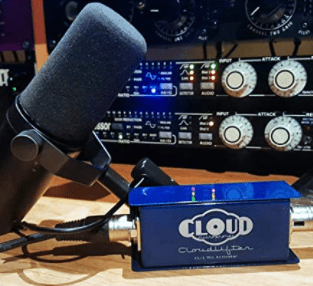
A Cloudlifter works by plugging it into the microphone's XLR cable.
It then receives 48 volts of phantom power through this cable from your external phantom power unit, which is used to create sound-based electricity via a small built-in microphone of its own.
This signal is amplified and processed to be sent back to the microphone through the same XLR cable, effectively increasing its output.
[The best thing about Cloudlifter and its alternatives is that they add sufficient gain to your audio signal, so you don't have to turn your mixer as loud as you would if you had no Cloudlifter.]
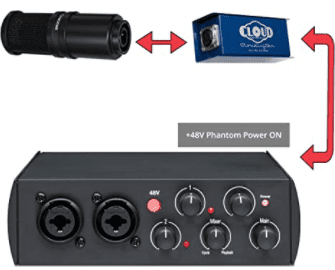
One of the most famous Cloudlifter models is the CL-1.
It's a plug-and-play device and comes with a single channel, just like most of the Cloudlifter alternatives. The CL-1 requires a 48 voltage of phantom power that you can get from the mixer or audio interface.
Cloudlifter Alternatives – Fethead vs Dynamite vs Durham vs McBoost
Today, there are other Cloudlifter alternatives on the market, all of which work similarly.
They include:
Triton Audio Fethead – Lightweight
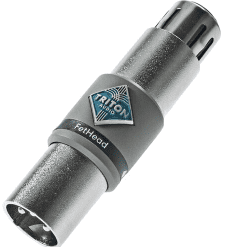
Triton Audio FEThead is ideal for applications where weight and size are important considerations. It's very lightweight, and it won't affect your mic stand at all.
The best thing about this inline microphone preamp is that it gives the cleanest gain.
Fethead also features a new technology called "phantom phase" that ensures that your mic is always in phase with the rest of your equipment. With Fethead you can add up to +25db.
This device also comes with a Fethead high pass filter. Fethead is a great Cloudliflter alternative because it gives you high-quality gain at an affordable price.
Dynamite DM-1 by sE Electronics – Plug and play

Dynamite DM-1 is a small device that attaches to the end of your microphone's XLR cable without having to change or remove its existing connector.
This active inline preamp gives you up to +28 dB of audio gain.
[The best part about the Dynamite is it is a plug-and-play device, and you can connect it directly to your mic. It has a low floor noise, and it gives you a clean gain.]
Cathedral Pipes Durham – Affordable
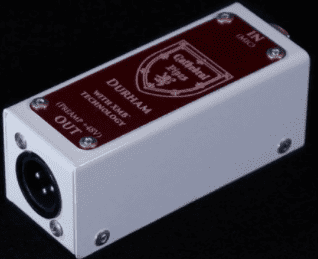
If you are looking for an affordable option, Durham by cathedral pipes is probably your best choice. It's also straightforward to install/remove if you need it elsewhere.
The Durham microphone preamplifier transforms low-level microphone signals into line-level connections to an amplifier, recorder, or console mixer.
This device works by receiving standard 48V phantom power, amplifying it with an ultra-low noise JFET amplifier.
The built quality and design of Durham are similar to Cloudlifter. Durham comes with one channel and provides a gain of up to 20db.
Radical McBoost
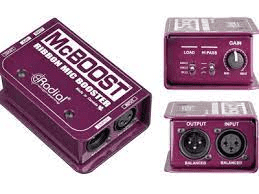
McBoost is a small device that you can use to increase the output of your microphone. It works similarly to Durham, but its lower price makes it an attractive option too.
McBoost stands out from Cloudlifter and other alternatives because it comes with a gain knob and level switch.
It comes with one channel and offers a gain boost of up to +25db.
The fact that you can change loads on this device gives you the freedom to explore different input impedance and see if they are working correctly with your microphone.
This device works just like Cloudlilter, but it comes with additional features, which gives it an edge over other models.
NOTE: Just like Cloudlifter, all these alternatives come with a single channel, 1 XLR in and XLR out.
Read Also: How to Earrape Mic? (Discord, Zoom) – Don't Miss this Guide
FAQs on Cloudlifter
You need a Cloudlifter if you have a dynamic or ribbon mic that has a low output level. A cloudfilter is necessary if you want to boost the low output level from your microphone.
The Shure SM7B is a dynamic microphone. Dynamic and ribbon microphones have low audio signals. Therefore, you need a Cloudlifter to boost the low-level signal.
It depends on what model you get. The CL-1 needs 48 volts of phantom power. You can get this phantom power from a mixer, audio interface, or any external phantom power unit.
The gain you can get from the Cloudlifter depends on what model you get. If you get the CL-1, you can get up to +25 dB of gain.
Conclusion
This is everything you need to know about Cloudlifter and how it works.
In a nutshell:
A Cloudlifter is a microphone preamplifier that attaches to an XLR microphone line. It functions as a high impedance voltage booster for microphones with low output levels.
Cloudliflter is necessary if you want to boost the low output level from your microphone.
The Cloudlifter alternatives perform the same way.
- Durham has a similar design and build quality to Cloudlifter.
- Fethead gives you a direct mic connection.
- McBoost gives you flexibility because it comes with additional features. But it's pretty expensive.

